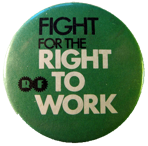 For years, skilled workers from around the world have used H-1B visas as their tickets into the U.S. These visas are intended to provide companies with a pool of specialized foreign labor in case they can’t find any qualified domestic candidates. According to a recent lawsuit, however, one of the world’s biggest brands may have been abusing the H-1B system in order to boost their own bottom line. Rather than filling open positions with outsourced labor, The Walt Disney Company Continue reading
For years, skilled workers from around the world have used H-1B visas as their tickets into the U.S. These visas are intended to provide companies with a pool of specialized foreign labor in case they can’t find any qualified domestic candidates. According to a recent lawsuit, however, one of the world’s biggest brands may have been abusing the H-1B system in order to boost their own bottom line. Rather than filling open positions with outsourced labor, The Walt Disney Company Continue reading






 Wal-Mart became the world’s largest retailer by keeping margins low on everything, including employee compensation. For the Florida-based grocer Publix, however, keeping staff motivated through strong financial incentives is a recipe for success rather than instability. Publix’s net margins of 5.6 percent trounce Wal-Mart’s 3.8 percent, making it the most profitable grocery chain in the nation. With $27.5 billion in sales, it’s also the largest employee-owned company in America. Staffers control 80 percent of the company thanks to a policy
Wal-Mart became the world’s largest retailer by keeping margins low on everything, including employee compensation. For the Florida-based grocer Publix, however, keeping staff motivated through strong financial incentives is a recipe for success rather than instability. Publix’s net margins of 5.6 percent trounce Wal-Mart’s 3.8 percent, making it the most profitable grocery chain in the nation. With $27.5 billion in sales, it’s also the largest employee-owned company in America. Staffers control 80 percent of the company thanks to a policy 

